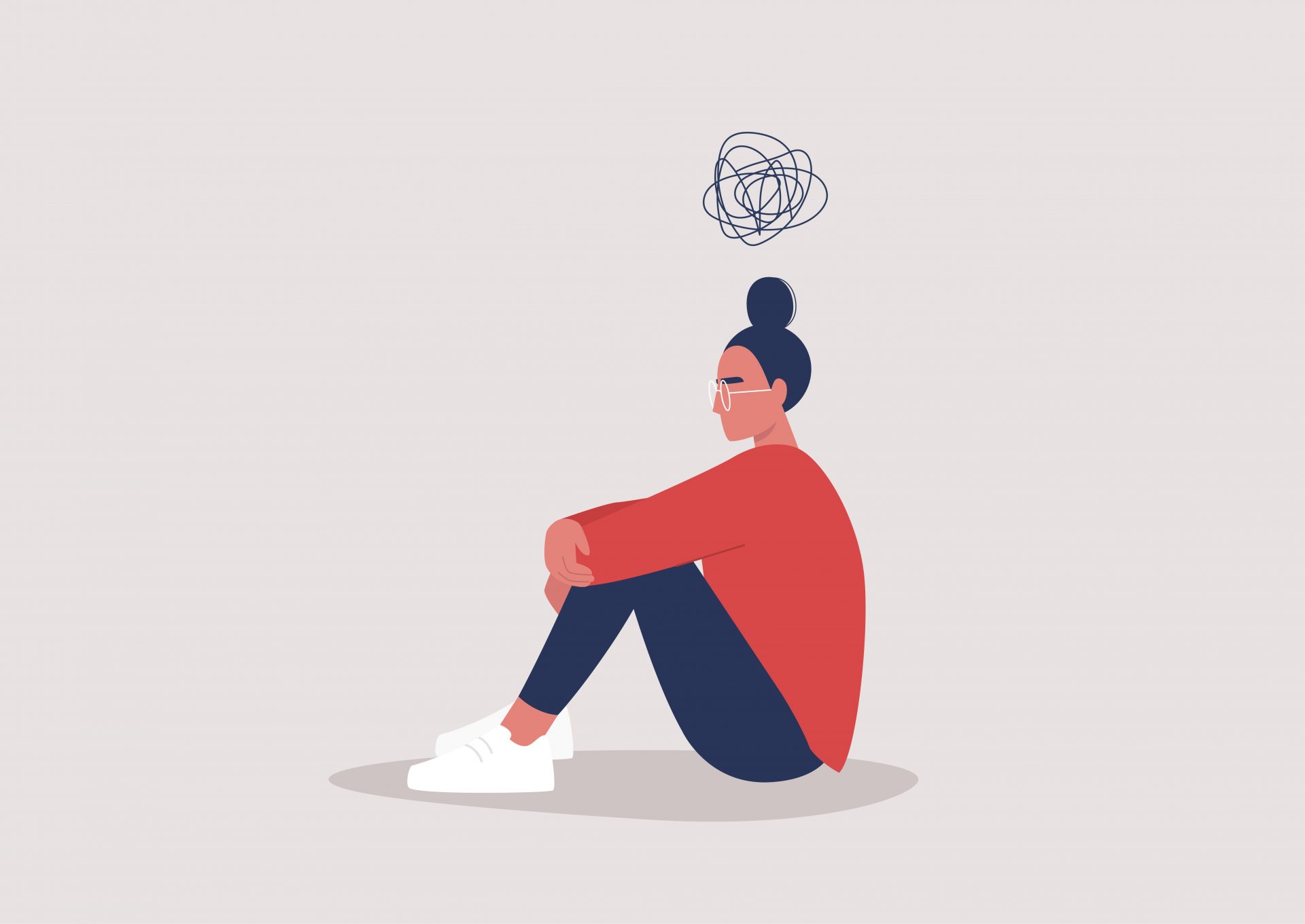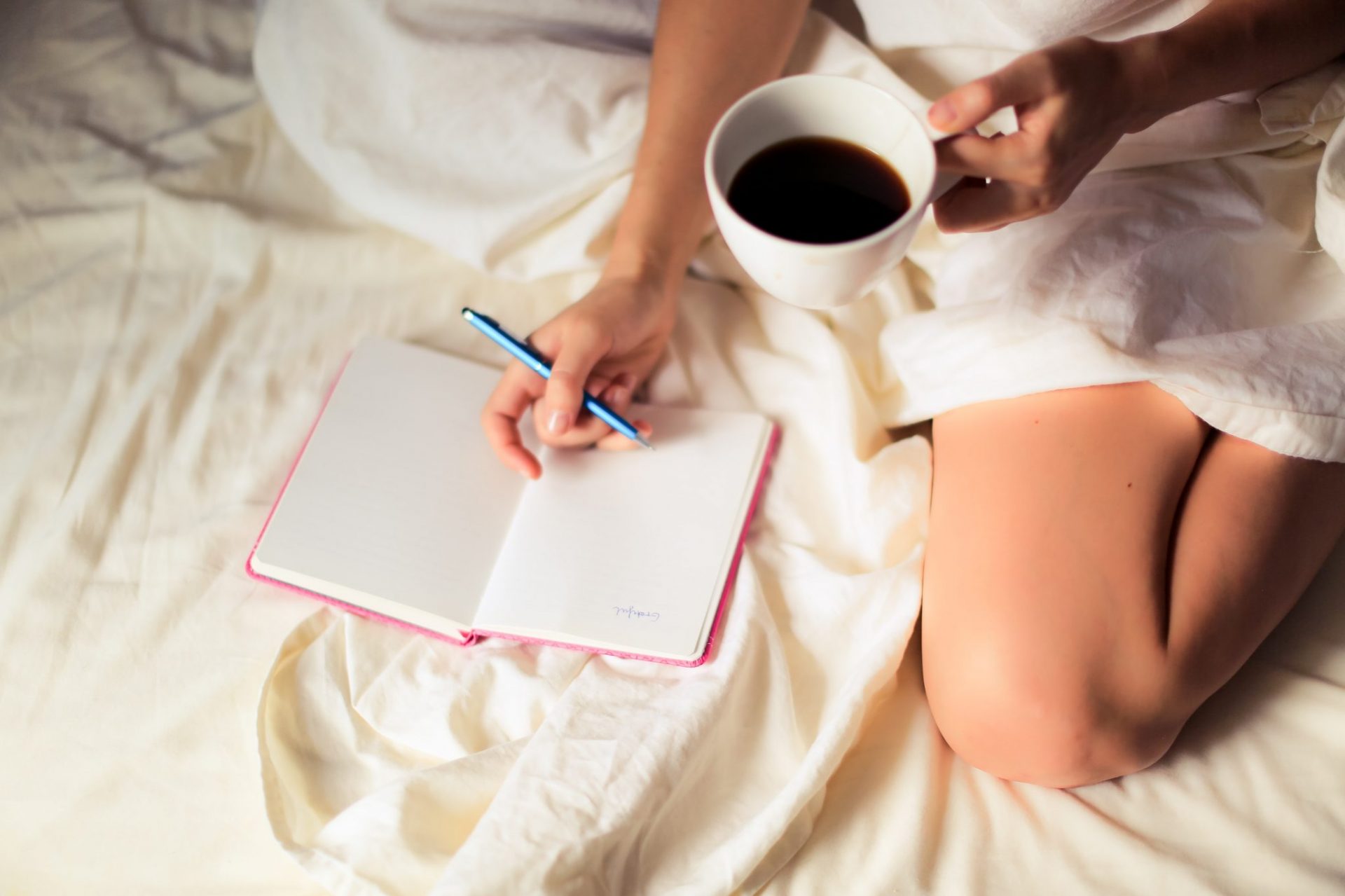
Written by Chloe Gray
This ‘brain dump’ journaling technique helped one writer feel less anxious before bed. Here’s how you can do it.
Whether it’s used to hibernate over the weekends or sneak in a few comfy hours of answering work emails in pyjamas, there’s always a conversation to be had about the way beds are used.
Is it any surprise? Just the image of snuggling down with a book beneath a lamp and relaxing until you fall asleep always makes getting into bed extremely appealing. But the reality for many people is much different.
Lying down in the dark seems to be the time when unwanted and intrusive thoughts come to the forefront of many people’s minds brain. That email you forgot to send is no longer quite so forgotten and tomorrow’s tasks become something to deal with right now.
That brain-rattling is something I know all too well. During bad mental health phases, I’ll either get it before I fall asleep or, more often than not, it will wake me up at 3am, and irrationally cause me to wonder if missing that deadline will impact how my team at work see me or whether that thing I said on Zoom could be used against me. Even the things that I know I did, like hitting save on a piece of work or turning off the hob, are questioned by my overactive mind when trying to get some shut-eye.
“Anxiety, which is characterised by excessive and uncontrollable worrying, triggers our flight or fight system which involves body responses like adrenaline and cortisol release,” explains Johanna Scheutzow, business psychologist at NHS-backed wellbeing platform Thrive. “The body uses these to prepare us to respond to a threat which makes us more alert and can stop us from being able to fall asleep.”
She adds: “Another common characteristic of worrying is that it often keeps us concerned about future events and the imagined disasters that will result from those events. When it works as intended, this system can help us find solutions to threats but in many cases it can just keep us stuck going around in circles, even when we know that our worries and concerns aren’t yet a reality.”

There are lots of techniques that are suggested for stopping this voice from circling. To name a few: meditation, reading, removing technology from the bedroom and journaling. The first three calm me for a while but the effects never feel long-lasting and, weirdly as a writer, I never saw how journaling could help me de-stress. It somehow didn’t feel cathartic or practical enough to moan into a notebook about the sheer amount of emails I have in my inbox or something a bit crap that a friend said to me.
The science suggests otherwise. A 2002 paper by the University of Washington showed that journaling about a personally experienced stressful or traumatic event can improve mental health. This is particularly relevant right now, as we need to remember that life as we know it might often feel like one big stressful event, with the majority of our routines and hobbies being thrown out the window.
The most interesting part of this study though is the specifics of what the participants wrote down are what benefited them the most. Researchers asked one group of participants to just write about their emotions and another group to write about both their emotions and ‘cognitive processing’, meaning what they understood about the events and their emotions. The latter group saw the most “positive growth” from their writing.
“Journaling can help us to feel calmer by allowing us to clarify our thoughts and feelings, reduce feelings of stress by lowering the intensity and creates greater self-awareness,” explains Johanna. She says that using journaling to look at how and why we feel our emotions is the most useful aspect of the practice: “By challenging your immediate assumptions, you can gain more control over your resulting feeling and reframe situations to be more helpful.”
This might explain why a technique my friend (also a writer, also a journaling sceptic) recommended to me was so effective. I refer to it as a structured brain dump, and it involves writing more about the practical elements of the day than simply how I feel.
My brain dump journalling technique
The really simple method goes something like this: divide a page in four. Put the headings ‘good’, ‘bad’, ‘problems’ and ‘solutions’ in a box each. Fill each quarter of the page with things from your day that fit the box’s description, with the ‘solutions’ section being something you’ll do tomorrow or in the future to make things better. It can be anything, small or large, for example:
Good: had a FaceTime with mum, my boss congratulated me on the project I’m working on, had pasta for dinner
Bad: didn’t meet a deadline, boy from Hinge rescheduled our date
Problems: was receiving too many Slack messages, a friend has lost their job and I don’t know how to support her
Solutions: turn notifications off, send friend flowers tomorrow

It may sound simplistic, but it does really work. It gives me a chance to acknowledge the sad, stressful or annoying situations of the day while still remembering that every day has something good, no matter how tiny it is. It’s also a chance to be productive. To analyse what went wrong and what you can do to make it better and who you can turn to for help.
It’s also a very interesting thought experiment. Sitting down with my page of good and bad, problems and solutions, my brain often doesn’t go where I think it’s going to. We tend to think that it’s the big events in our day that cause us concern, but I find that it’s usually the smallest things that come to head when I really ask myself what I’m stressed about. Sometimes that can be rectified there and then, such as sending a text if I’m feeling like a bad friend for not checking in on someone. Other times, the ‘ah ha’ moment highlights underlying problems that seem so small but are stopping me from being creative a work, impacting my mood or adding unnecessary stress into my day.
Johanna explains that the reason this all works for me is that, rather than “staying passive, ruminating about things in the past and blaming oneself”, I am finding active solutions “by putting energy into doing something that can help you move out of the place of stress and anxiety”.
I’m thinking of ways to make it sound more glamorous, exciting or tempting enough for you to do it. Unfortunately, I can’t. But brain dumping has allowed me to leave my problems on the paper, rather than in my brain.
Follow @StrongWomenUK on Instagram for the latest workouts, delicious recipes and motivation from your favourite fitness experts.
Source: Read Full Article